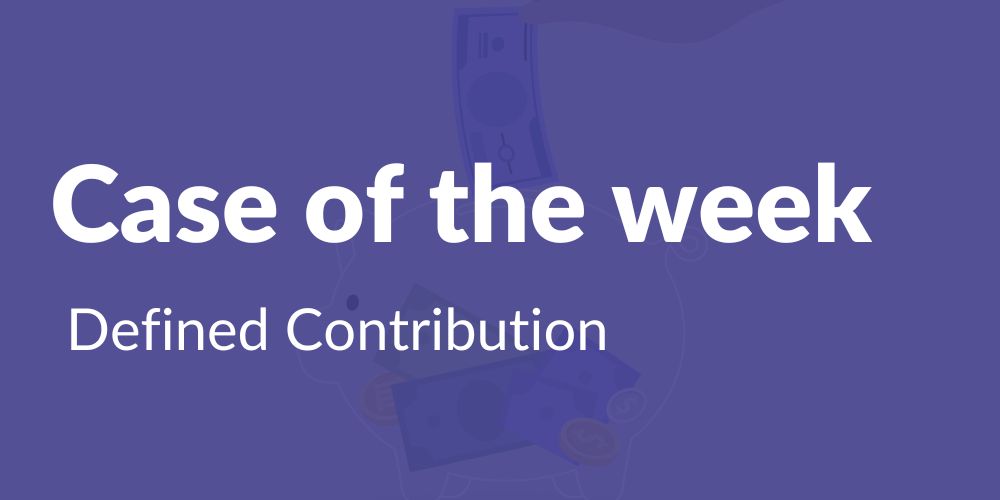
Chapter 7 Bankruptcy Trustees Can Use the Abandoned Plan Program
“What is the Abandoned Plan Program and what changes to the program did the Department of Labor just make?”
Welcome to the Retirement Learning Center’s (RLC’s) Case of the Week. Our ERISA consultants regularly receive calls from financial advisors on a broad array of technical topics related to IRAs, qualified retirement plans and other types of retirement savings and income plans, including nonqualified plans, stock options, Social Security and Medicare. This is where we highlight the most relevant topics affecting your business. A recent call with a financial advisor in California is representative of a common question on abandoned plans.
“What is the Abandoned Plan Program and what changes to the program did the Department of Labor just make?”
Highlights of the discussion on abandoned plans and bankruptcy
The Department of Labor’s (DOL’s) Abandoned Plan Program was implemented in 2006 and provides a process for the termination and distribution of benefits from an individual account retirement plans (e.g. 401(k) plans) in the situation where the plan’s sponsor has closed down and abandoned the plan. When a plan is abandoned, custodians, such as banks, insurers, and mutual fund companies, are often left holding assets with no authority to terminate the plan or make benefit decisions. This means that plan participants are unable to access the retirement benefits that they have earned.
Under the Abandoned Plan Program, custodians can wind up the affairs of abandoned plans so that benefits are able to be distributed to participants and beneficiaries. In general, a plan is “abandoned” if (a) no contributions to or distributions from the plan have been made for a period of at least 12 consecutive months; and (b) following reasonable efforts to locate the plan sponsor, it is determined that the sponsor non longer exists, cannot be located, or is unable to maintain the plan. The determination of whether a plan is “abandoned” can only be made by a Qualified Termination Administrator (QTA).
To be a QTA, the entity must hold the plan’s assets and be eligible as a trustee or issuer of an individual retirement plan under the Internal Revenue Code (e.g., a bank, trust company, mutual fund family, or insurance company). Once a plan is deemed “abandoned” by a QTA, the regulations require that the QTA:
Notify the Employee Benefits Security Administration (EBSA) division of the DOL before and after terminating and winding up a plan;
Locate and update plan records (excluding an amendment to terminate the plan);
Calculate benefits payable to participants and beneficiaries;
Notify participants and beneficiaries of the termination, their rights, and options;
Distribute benefits to participants and beneficiaries; and
File a summary terminal report (does not have to file a Final Form 5500 for the plan).
What’s Changed?
On May 16, 2024, the EBSA, under the DOL, published interim finals rules relating to the amendment of the Abandoned Plan Program to allow Chapter 7 bankruptcy trustees who are responsible for administering a bankrupt company’s individual retirement plan to terminate and distribute benefits to participants under the Abandoned Plan Program. Prior to this change, Chapter 7 bankruptcy trustees were unable to use this Program.
There are special rules for Chapter 7 bankruptcy trustees under the Abandoned Plan Program. In cases where a plan’s sponsor is in Chapter 7 bankruptcy, the plan is considered “abandoned” when a bankruptcy court enters an order for relief in the sponsor’s Chapter 7 case. In these situations, the Chapter 7 bankruptcy trustee or an “eligible designee” (i.e., a custodian, QTA or an independent bankruptcy practitioner (a person other than the bankruptcy trustee of the plan sponsor’s case who, within the previous five years, has served as a bankruptcy trustee in a Chapter 7 bankruptcy case).
The Chapter 7 bankruptcy trustee’s duties are generally the same as the QTAs, but here are a few differences.
The bankruptcy trustee must make reasonable and diligent efforts to determine whether the plan is owed any contributions (employer or employee) and the amount that is owed.
If the bankruptcy trustee determines that the delinquent contributions are greater than a de minimis amount, the bankruptcy trustee must appoint an eligible designee to terminate and wind up the plan. The eligible designee must take reasonable steps to collect the delinquent contributions on the plan’s behalf.
The bankruptcy trustee is responsible for selecting and monitoring the eligible designee in accordance with ERISA’s fiduciary duties.
The bankruptcy trustee must report to the DOL any activity that the bankruptcy trustee believes may be evidence of a fiduciary breach involving plan assets by a prior plan fiduciary.
This amendment is effective July 16, 2024, and may be relied upon by Chapter 7 bankruptcy trustees after that date.
The EBSA also amended prohibited transaction exemption (PTE) 2006-06, to permit Chapter 7 bankruptcy trustees who are using the Abandoned Plan Program to be able to pay themselves for their services rendered in furtherance of terminating and distributing benefits under the Program.
Conclusion
There are options for the distribution of benefits from an abandoned plan, but a determination needs to be made as to whether the plan’s sponsor is in Chapter 7 bankruptcy and subject to the new special rules or whether the general abandoned plan rules apply.
